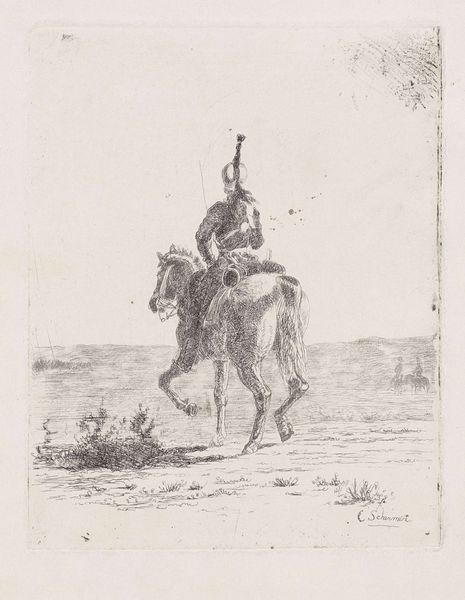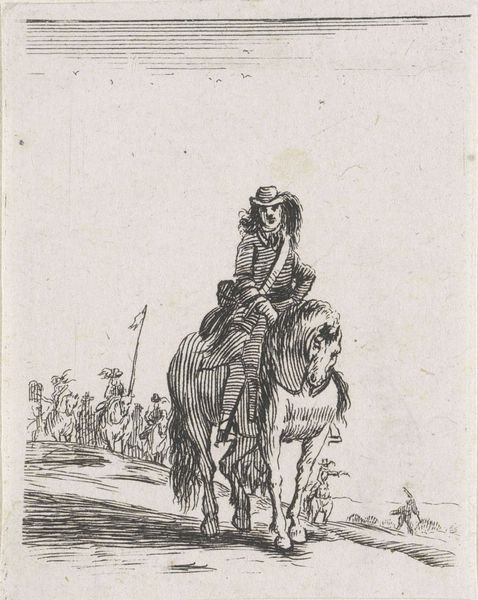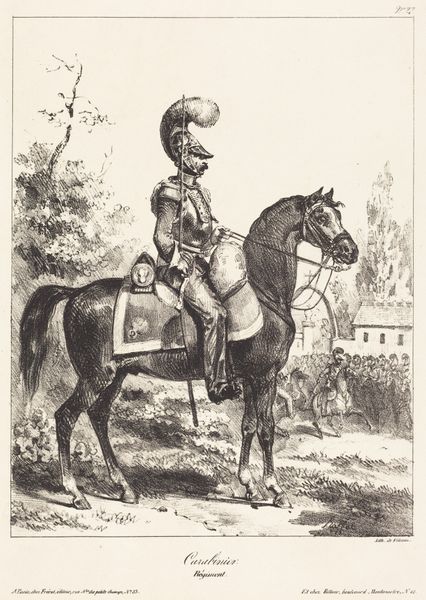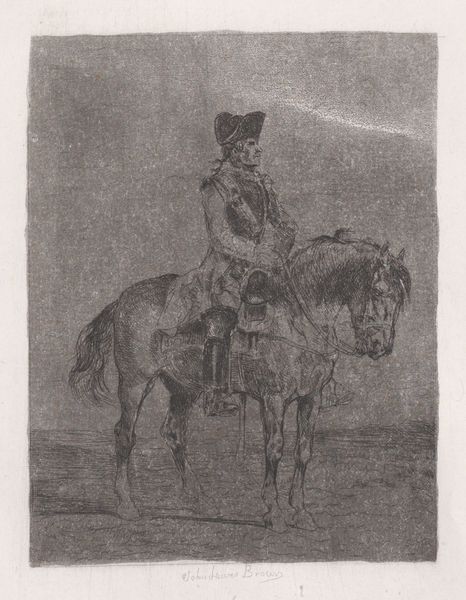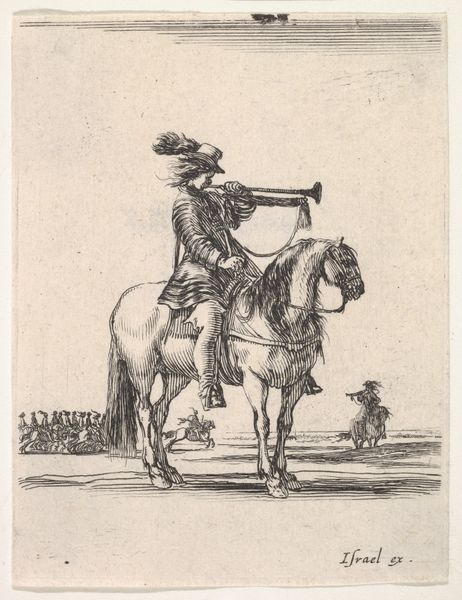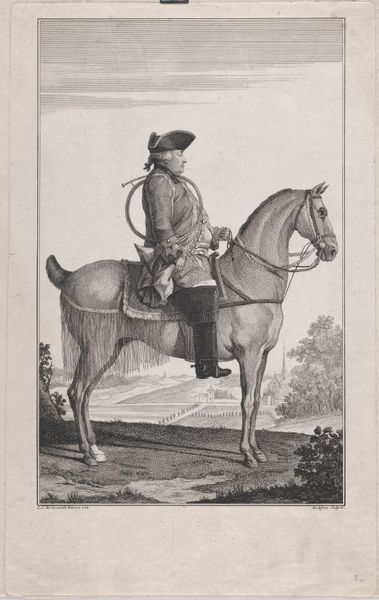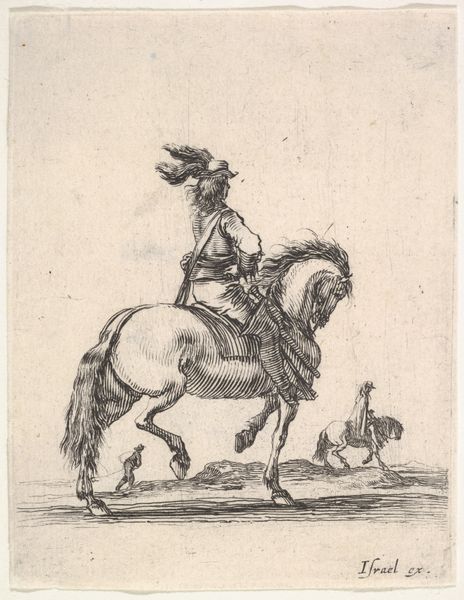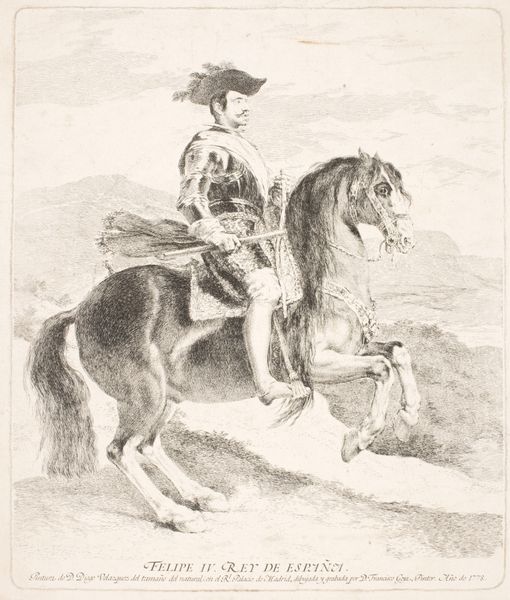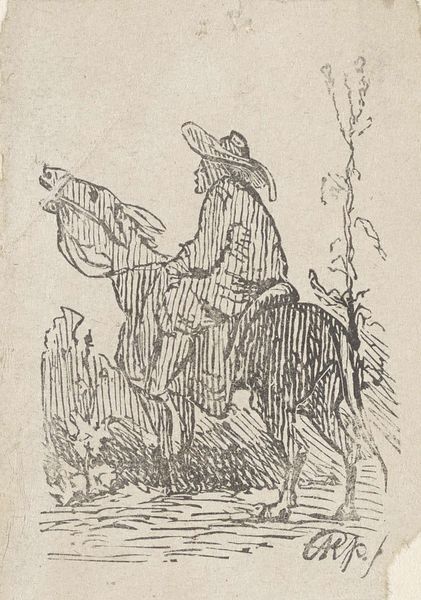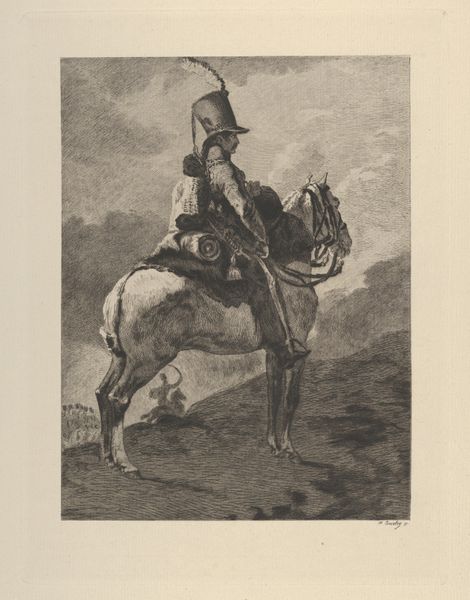
Dimensions: Image: 3 11/16 × 2 3/16 in. (9.3 × 5.5 cm) Plate: 3 7/8 × 2 3/8 in. (9.9 × 6 cm) Sheet: 7 1/16 × 6 11/16 in. (18 × 17 cm)
Copyright: Public Domain
Editor: This is "Man on Horseback," an engraving by John-Lewis Brown, placing its creation somewhere between 1847 and 1890. It’s currently housed in the Met. I'm immediately struck by the rather stark and lonely impression it gives off, mostly in tones of gray. What’s your take on it? Curator: Lonely is an interesting word. I think Brown captures a feeling more akin to stoicism here. There’s something resolute in the angle of the man’s back, the set of his shoulders. It's a romanticized figure but a little different from many equestrian works. This isn't a conquering hero. Do you get a sense of where he might be going, or what he's doing? Editor: I don't know, but I see the weapon, so, my initial guess is that he's a soldier on patrol or en route to a battle. Curator: Yes, perhaps, or simply on a hunt, since those activities often overlapped historically. What intrigues me are the technical choices Brown makes. He is very focused on this idea of creating many fine lines through engraving; this gives us very nuanced light and shadows. Note the landscape – it's suggested with incredibly economical strokes, almost as an afterthought to the figure and his mount. Does it speak to a particular romantic trope for you? Editor: I think so. It reminds me a little bit of the wandering artist trope in Romanticism - alone and in contemplation. That said, I hadn't even considered the technicality of engraving as being a purposeful choice. Curator: Right! And considering the laborious nature of the engraving process makes the swift, sure strokes describing the landscape even more compelling, don’t you think? Editor: I absolutely agree, thank you for helping me notice what could be easily overlooked!
Comments
No comments
Be the first to comment and join the conversation on the ultimate creative platform.
